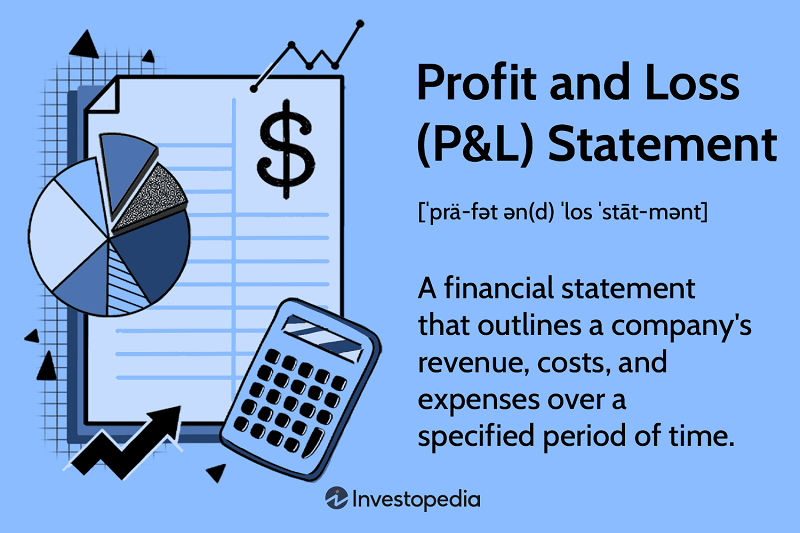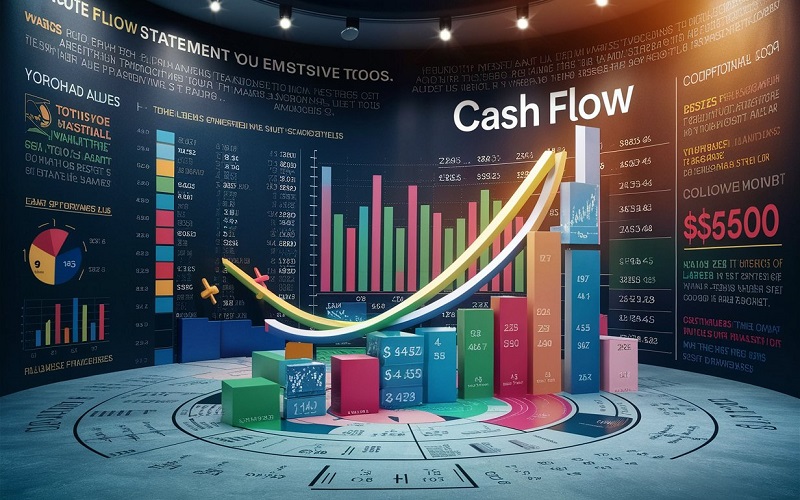
Unlock Your Business Potential: The Ultimate Guide to Creating Financial Statements
April 17, 2024
Investing for Small Businesses: The Untold Truth About Tax Implications You NEED to Know
April 29, 2024Understanding Profit and Loss in Business
I. Introduction
The lifeblood of any business is its financial health. Understanding how much money a business is bringing in and spending out is crucial for making informed decisions and ensuring its success. This is where the concept of _profit and loss (P&L)_ comes in. A P&L statement, also known as an income statement, is a financial report that summarizes a company’s revenue, expenses, and profit or loss over a specific period. By analyzing the P&L, businesses can gain valuable insights into their financial performance, identify areas for improvement, and make strategic plans for growth.
II. Demystifying the P&L Statement
A P&L statement might seem complex at first glance, but it’s essentially a breakdown of a company’s financial activity during a specific period, often quarterly or annually. The statement is divided into key sections that detail the following:
-
P&L Statement Explained
- Provides a snapshot of a company’s financial performance by showing how much money it generated (revenue) and how much it spent (expenses) during a specific period.
-
Key Components of a P&L Statement
- Revenue (Sales): This section reflects the total income generated through the sale of goods or services.
- Cost of Goods Sold (COGS): Represents the direct costs associated with producing the goods or services sold.
- Operating Expenses (OpEx): Includes all the ongoing expenses a business incurs to operate, such as rent, salaries, marketing, and administrative costs.
- Examples of Operating Expenses:
- Rent
- Salaries and wages
- Marketing and advertising costs
- Utilities
- Insurance
- Depreciation and amortization
- Examples of Operating Expenses:
-
Calculating Net Income (Profit or Loss)
- Net income, also referred to as the bottom line, is calculated by subtracting total expenses from total revenue. A positive net income indicates a profit, while a negative net income signifies a loss.
III. Decoding the P&L: A Line-by-Line Breakdown
Understanding each line item on a P&L statement is crucial for a deeper analysis. Here’s a breakdown of the major components:
-
Understanding Revenue Streams
-
The revenue section captures all the income a business generates from its core operations. There can be different types of revenue depending on the business model.
- Types of Revenue:
- Product Sales Revenue: Income generated from selling physical products.
- Service Revenue: Income generated from providing services to clients.
- Types of Revenue:
-
-
Cost of Goods Sold (COGS) Breakdown
-
COGS represents the direct costs involved in producing the goods a business sells. These costs typically include:
- Direct Materials: The raw materials used to manufacture the product.
- Direct Labor: The wages paid to employees directly involved in production.
- Manufacturing Overhead: Indirect costs associated with production, such as factory rent and utilities.
-
-
Unveiling Operating Expenses (OpEx)
-
Operating expenses encompass all the ongoing costs a business incurs to function on a daily basis. They can be categorized as follows:
-
Selling, General & Administrative Expenses (SG&A): These are indirect expenses essential for running the business but not directly involved in production.
- Examples of SG&A Expenses:
- Marketing and advertising costs
- Rent and utilities for office space
- Salaries for administrative staff
- General office supplies
- Examples of SG&A Expenses:
-
Research & Development (R&D) Expenses: Costs associated with developing new products or services.
-
Depreciation & Amortization (D&A) Expenses: The gradual allocation of the cost of tangible and intangible assets over their useful life.
-
-
-
Interest Expense
- Represents the interest paid on loans or other forms of debt.
-
Taxes
- Includes income taxes and other taxes a business is obligated to pay.
-
Net Income (Profit or Loss) Explained
- The net income, the bottom line, represents the company’s overall profit or loss after accounting for all expenses.

IV. P&L Analysis: Making Sense of Your Financial Health
The P&L statement is a powerful tool for analyzing a company’s financial well-being. Here’s how you can leverage it:
-
Using P&L to Measure Business Performance
-
By analyzing the P&L statement, businesses can calculate various profitability ratios that provide insights into their financial efficiency and effectiveness.
- Profitability Ratios:
- Net Profit Margin: Measures the percentage of revenue remaining as profit after accounting for all expenses.
- Return on Equity (ROE): Indicates how much profit a company generates for each dollar of shareholder equity.
- Profitability Ratios:
-
-
Identifying Trends and Making Business Decisions
- Analyzing P&L statements over time can reveal trends in revenue, expenses, and profitability. This information is crucial for making informed decisions about resource allocation, pricing strategies, and cost-cutting measures.
-
Benchmarking Against Industry Averages
- Comparing a company’s P&L performance to industry benchmarks can help assess its relative financial health and identify areas for improvement.
-
Limitations of P&L Analysis
- While P&L analysis is valuable, it’s important to acknowledge its limitations. The P&L is a historical record and doesn’t necessarily predict future performance. Additionally, it doesn’t account for non-financial factors that might impact the business.
Part 2: Using P&L to Drive Business Growth
V. Leveraging P&L for Strategic Planning
The P&L statement goes beyond simply reporting past performance. It serves as a cornerstone for strategic business planning. Here’s how:
-
Setting Financial Goals
- Analyzing the P&L helps establish realistic financial goals for the business, such as targeted profit margins or desired revenue growth.
-
Aligning P&L with Business Strategy
- The P&L should be aligned with the overall business strategy. Strategic initiatives should be evaluated based on their impact on future profitability as reflected in the P&L.
-
Forecasting Future Performance
- Historical P&L data can be used to create financial forecasts that predict future revenue and expenses. This helps businesses make informed decisions about resource allocation and investment opportunities.
-
Identifying Areas for Improvement
- By analyzing trends and variances in the P&L, businesses can pinpoint areas where they can improve their cost structure or optimize revenue streams to enhance profitability.

VI. Cost Management Strategies to Improve Profitability
A crucial aspect of driving business growth is managing costs effectively. Here are some strategies to consider:
-
Reducing Cost of Goods Sold (COGS)
-
Focusing on reducing COGS can significantly improve profit margins. Here are some approaches:
- Negotiation with Suppliers: Negotiating better deals with suppliers for raw materials and other production-related costs.
- Inventory Management: Implementing efficient inventory management practices to minimize waste and storage costs.
- Production Efficiency: Identifying and implementing strategies to streamline production processes and reduce manufacturing overhead.
-
-
Optimizing Operating Expenses (OpEx)
-
Optimizing OpEx can free up resources for growth initiatives. Here are some strategies:
- Identifying and Eliminating Wasteful Spending: Conducting a thorough review of OpEx to identify and eliminate unnecessary expenses.
- Renegotiating Contracts with Vendors: Renegotiating contracts with vendors for better rates on services like utilities or marketing.
- Streamlining Processes: Automating and streamlining internal processes to improve efficiency and potentially reduce labor costs.
-
VII. Revenue Growth Strategies to Boost Profitability
Growing revenue is another key approach to boosting profitability. Here are some strategies to consider:
-
Increasing Sales Volume
-
Implementing strategies to increase sales volume can generate more revenue without significantly impacting expenses.
- Marketing and Sales Strategies: Developing effective marketing and sales campaigns to reach new customers and expand market share.
- Expanding into New Markets: Exploring new markets or customer segments to broaden the revenue base.
-
-
Raising Prices
-
In some cases, strategically raising prices can increase profitability without deterring customers.
- Value-Based Pricing Strategies: Implementing value-based pricing strategies that reflect the perceived value customers place on your products or services.
-
-
Developing New Products or Services
- Diversifying your product or service offerings can attract new customers and generate additional revenue streams.
VIII. P&L for Different Business Types
While the core components of a P&L statement remain similar, the specific line items might vary depending on the business type. Here are some examples:
-
P&L for Service-Based Businesses
- Service-based businesses might have a higher focus on labor costs within COGS and potentially less emphasis on direct materials.
-
P&L for Manufacturing Businesses
- Manufacturing businesses will likely have a more detailed breakdown of COGS, including direct materials, direct labor, and various manufacturing overhead costs.
-
P&L for E-commerce Businesses
- E-commerce businesses might have significant marketing and advertising expenses reflected in their OpEx due to their reliance on online channels.
-
P&L for Startups and Small Businesses
- Startups and small businesses might have a simpler P&L structure with fewer line items compared to larger corporations.
IX. FAQs: Frequently Asked Questions about Profit and Loss
Here are some common questions regarding P&L statements:
- What is the difference between a profit and loss statement and a balance sheet?
- A P&L statement focuses on a company’s revenue and expenses over a specific period
How often should I create a P&L statement?
-
- The frequency of creating a P&L statement can vary depending on the business size and complexity. Monthly or quarterly statements are common, with annual statements providing a broader perspective.
Can I use a P&L statement to compare my business to competitors?
-
- While direct competitor P&L information might not be readily available, industry benchmarks based on P&L data can be used for relative comparisons.
Resources
The Balance Small Business: How to Read a Profit and Loss Statement
Corporate Finance Institute: Profit and Loss Statement (P&L)
Investopedia: Profit and Loss Statement Meaning, Importance, Types, and Examples
DISCLAIMER:The information in this article is for informational purposes only and is not meant to take the place of legal and accounting advice.




